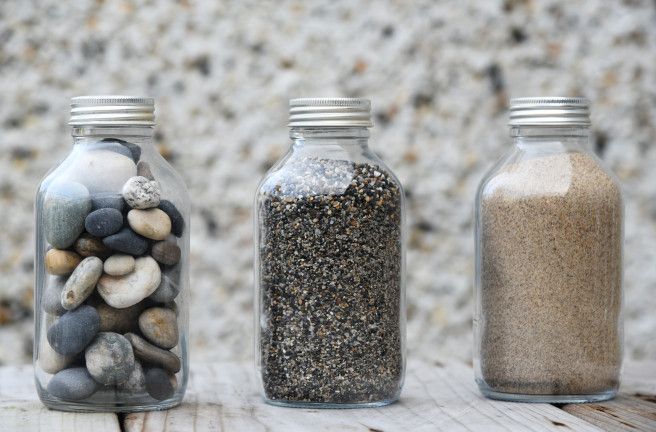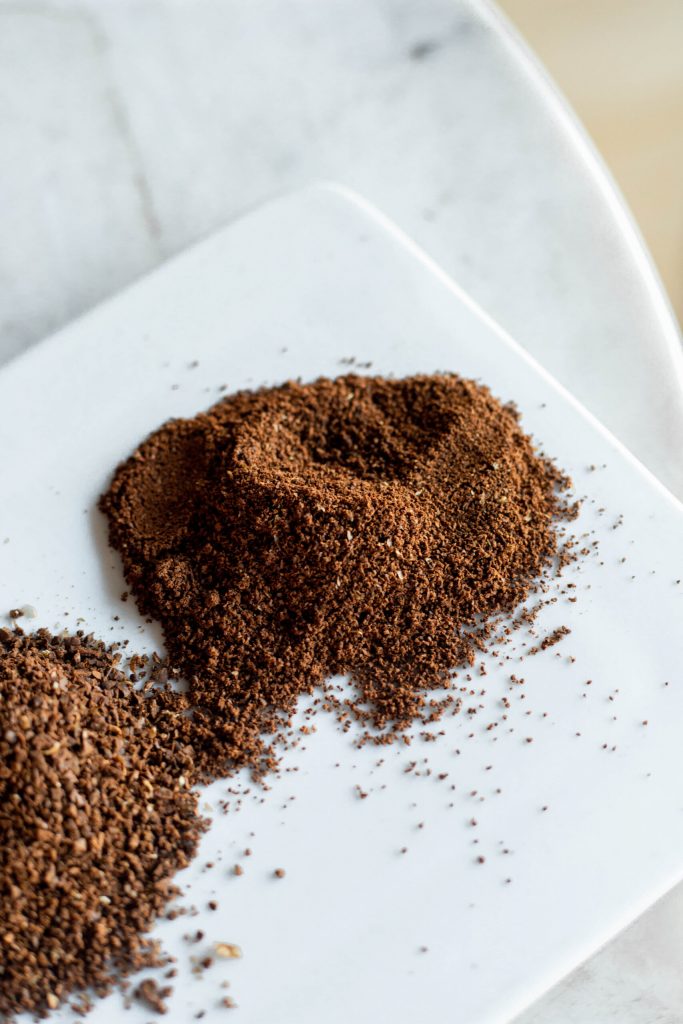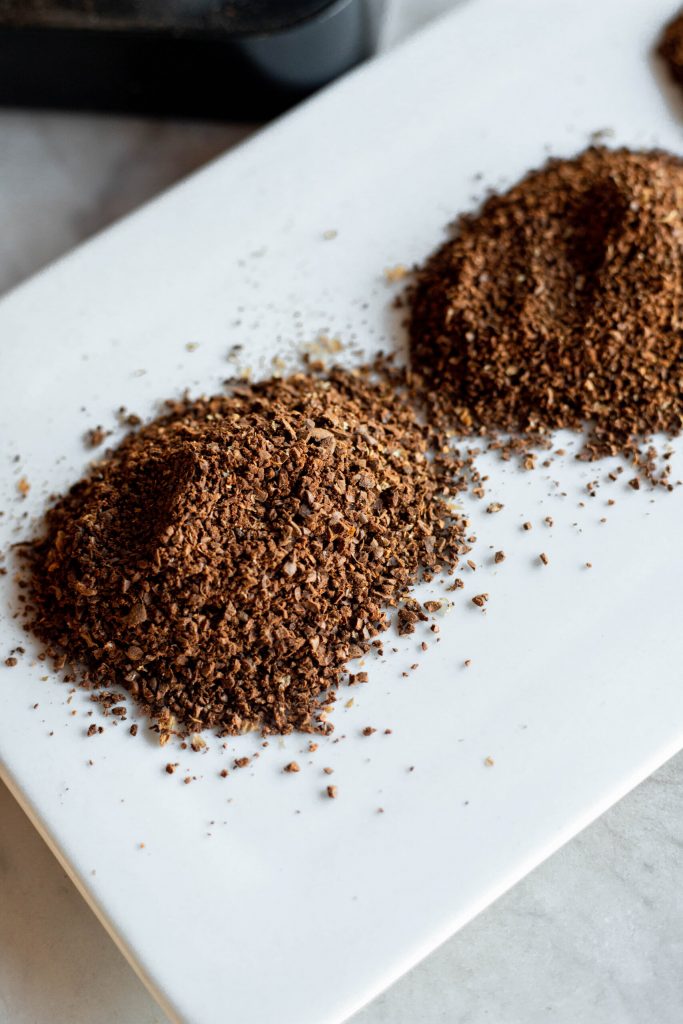Grinding coffee is the process of reducing the coffee bean to flour to facilitate the preparation of the infusion.
With that said, let’s start by explaining why the size of coffee grinds matters.
Think of a glass with sand v.s. a glass full of stones. If we add the same amount of water to both of them, we will notice that water takes longer to pass through the sand than through the stones because of the size of those elements.
The same is true for different sizes of coffee grinds. Using the wrong size of coffee grinds with the wrong extraction method will impact the final result of the beverage. What type of grind to use is directly related to the coffee chosen preparation method.

The coffee grind must correspond to the brewing method and infusion time for a correct extraction. The faster the preparation of the coffee infusion, the finer the grind, and the slower, the coarser.
Although there are many categories of coffee grind, we will divide them into three:
The grind tends to be fine to ensure that the water comes into contact with as much of the coffee as possible and thus the extraction is carried out quickly. Finer implies that the particles dissolve faster. It is the ideal grind to prepare in Espresso, Greca/Moka and Ibrik machines.

It is usually the grind for drip methods such as Chemex, Homemade Coffee Makers, V60, cupping, among others. This coffee grind is required for coffees with longer extraction times, approximately 2-4 minutes.

This coffee grind is used for methods that work by immersion, including the French press. Generally coffee takes longer to dissolve and absorb flavors in this extraction. The reason for this is due to the direct contact of the particles with the water and its extraction time, which is between 3 to 4 minutes.

Nope!
We have different coffee grinds for different brewing methods. For each use and for each type of “machine, there’s a type of coffee grind.” That is why it is so important to read the instructions when buying or acquiring brewing equipment.
Let’s take the coffee preparation time as an example. The preparation time is the number of minutes or seconds that it takes for the water to pass through the coffee particles. Depending on how fine or coarse the coffee particles are it will take the time to extract.
The method and size of the grind determines the extraction time of the coffee. If the particles are of different sizes, they will be extracted at different rates.
We cannot define coffee grind with a number or position of a mill. Every coffee and grinder is different and has different ways to adjust. Also, the behavior of coffee in different places is not the same despite using the same coffee. There are many factors to describe this, such as ambient temperature, roast date, roast level of the coffee, etc.
Only with practice we can get to understand what works best and this is judged solely by personal taste.
Finally, we invite you to watch our video Café en Casa Ep. 1- Coffee grinding.
Enjoy it!
The drip method, also known as Pour Over, is one of the best-known coffee extraction methods worldwide. At Café Don Juan, we offer a variety of Specialty Coffee that is served through this method, allowing us to stand out the best flavors, aromas, and textures of a coffee in the cups that we serve.